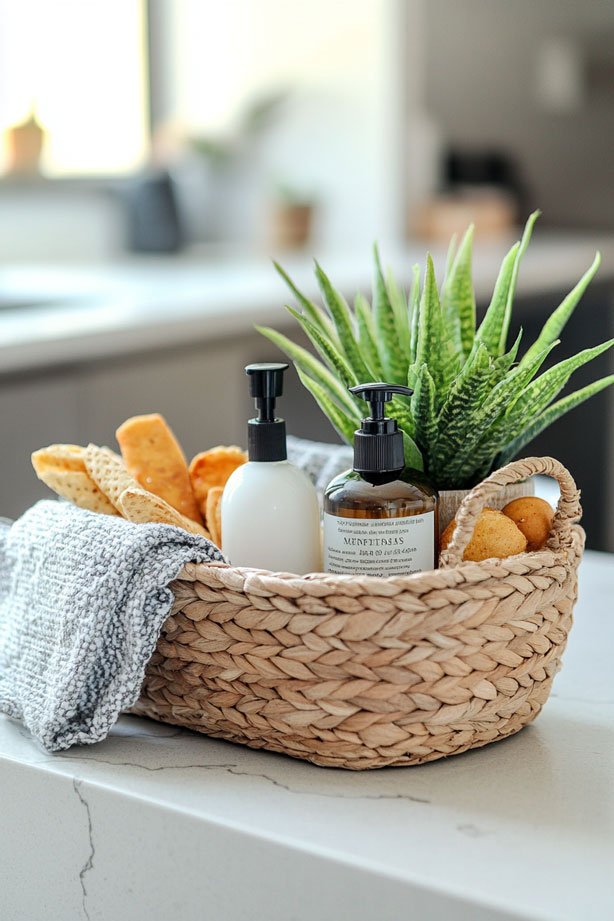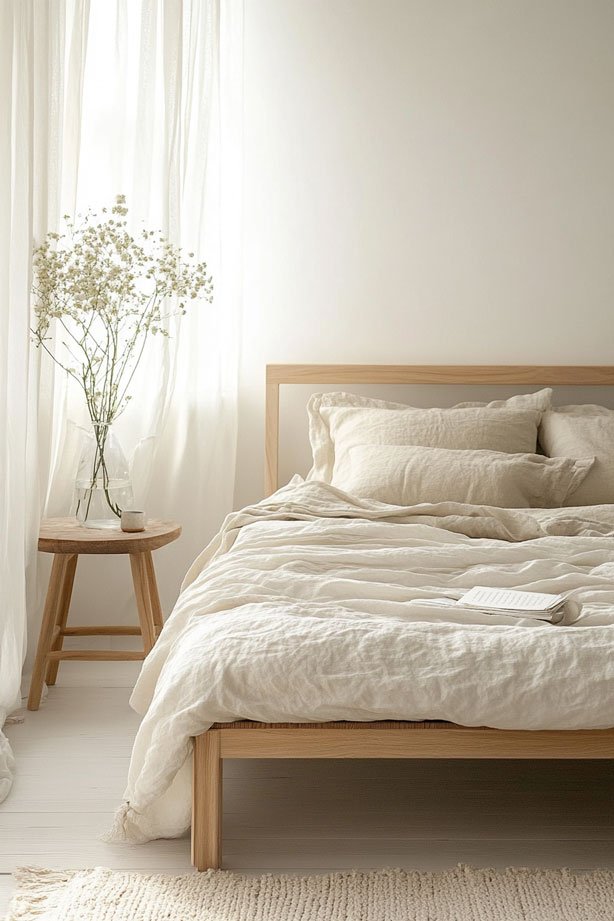
What Is Minimalist Decor and Why Does It Work for Apartments?
Minimalist decor focuses on simplicity, functionality, and intentional design, making it ideal for apartment living. By using clean lines, neutral colors, and essential furniture, it maximizes space while minimizing clutter. This approach makes small areas feel open, breathable, and easy to maintain—perfect for creating a calm, comfortable home without overwhelming it with unnecessary items.
Key Benefits and Steps for Implementing Minimalist Decor in Apartments
- Maximize Space: Use fewer, functional pieces to create an airy, open feel.
- Neutral Color Palette: Stick to whites, beiges, and grays to brighten the space.
- Reduce Clutter: Keep only essential items for a stress-free, easy-to-clean environment.
- Use Multifunctional Furniture: Opt for sofas, tables, or beds for multiple purposes.
- Focus on Quality Over Quantity: Invest in timeless pieces that are versatile and long-lasting.
- Simplify Decor: Incorporate minimal artwork or plants to add character without overcrowding.
- Easy Maintenance: Minimalism reduces cleaning time by keeping surfaces clear and organized.
- Flexible Design for Renters: Neutral, portable pieces make it easy to adapt to new spaces.
Benefits of Minimalist Interior Design in Small Spaces
Adopting a minimalist interior design style can do wonders if you’re living in a small apartment. With limited square footage, it’s easy for a space to feel cramped. But by focusing on the essentials and keeping things simple, you can create a home that feels open and airy. Minimalist decor emphasizes clean lines, neutral colors, and functional furniture, all of which help small spaces feel larger than they actually are. Instead of filling every corner with furniture or decor, you can let the room breathe. This approach ensures the space stays uncluttered and comfortable, making your apartment a place where you actually enjoy spending time.
How Minimalism Helps Reduce Clutter and Stress
One of the biggest benefits of minimalism is that it naturally reduces clutter. With a focus on only the things you need and love, you avoid the trap of holding onto unnecessary items. A minimalist home encourages you to be intentional with your belongings, which has a surprising effect on your mental health. It’s amazing how much lighter you feel when your home isn’t overwhelmed with stuff. Coming home to a minimalist space helps you unwind more easily since there are fewer distractions. Keeping surfaces clear also makes cleaning easier and faster—something we all appreciate after a busy day.
Why Minimalist Home Decor Appeals to Renters
Minimalist decor is especially appealing to renters. When you don’t own your place, you might feel less motivated to invest in expensive, permanent fixtures. Luckily, minimalist home decor relies on fewer, versatile pieces that can easily move with you if you relocate. A neutral color palette works in any type of space, so you won’t have to worry about matching your decor with different interiors. Renters also appreciate how minimalist style focuses on simplicity—by decorating less, you avoid the hassle of constant redecorating. Minimalist decor makes it easy to personalize your space without overwhelming it, creating a peaceful and flexible home that fits your lifestyle.
Minimalist Decor Living Room Ideas
1. Use a Modern Sofa as the Focal Point
Incorporate a sleek, low-profile modern sofa to create a central focus. Pair it with neutral tones and bare walls for a serene, uncluttered look.
2. Highlight Neutral-Toned Furniture and Abstract Art
Create visual interest with minimal effort by pairing neutral-toned furniture with a large abstract painting. This brings character to your space without cluttering it.
3. Embrace Simplicity with Bare Walls and Open Spaces
Choose low-profile furniture, neutral colors, and polished concrete floors to foster a clean, serene environment. Avoid excess decor to keep the space open and airy.
Minimalist Decor Kitchen Ideas
4. Focus on Clean Lines and White Cabinetry
Use white cabinets with polished concrete floors to achieve a minimalist kitchen. Keep countertops clear and add a single pendant light for subtle sophistication.
5. Integrate Functionality with Sleek Cabinetry and Appliances
Opt for sleek white cabinets and integrated appliances. This compact design ensures everything has its place, emphasizing function without sacrificing style.
6. Add Natural Wood Accents to Warm Up the Space
Incorporate light wood accents within white cabinetry for a modern yet warm look. Keep decor minimal, focusing instead on practical design elements.
Minimalist Decor Bedroom Ideas
7. Create a Calming Atmosphere with Platform Beds
Choose a low platform bed and soft white linens to promote tranquility. Minimal wooden accents can add subtle warmth without disrupting the calm vibe.
8. Combine Natural Wood Accents with White Linens
Pair natural wood elements with soft white bedding to create a cozy, minimal bedroom. Stick to functional decor that enhances simplicity and comfort.
9. Maintain Simplicity with a Low-Profile Bed
Opt for a low-profile bed with minimal surrounding furniture. This creates a visually clean aesthetic, ensuring the room feels spacious and clutter-free.
Minimalist Decor Bathroom Ideas
10. Choose Frameless Glass Showers for an Open Look
Use frameless glass showers to maximize the bathroom’s open feel. Pair it with neutral tones and simple metal fixtures to maintain a sleek, modern look.
11. Combine Polished Stone and Black Fixtures
Create contrast by pairing polished stone countertops with simple black fixtures. This adds sophistication while maintaining the room’s minimalist appeal.
12. Keep Decor Minimal with Neutral Tones
Stick to neutral colors and frameless mirrors for a clean, cohesive bathroom design. Focus on functionality to keep the space uncluttered.
Minimalist Decor Dining Room Ideas
13. Use a White Table with Wooden Chairs
A sleek white table with simple wooden chairs ensures an uncluttered dining space. Avoid unnecessary decor to maintain an open and inviting ambiance.
14. Opt for a Black Table for Contrast
Introduce a sleek black dining table for a touch of contrast. Pair it with wooden chairs and maintain a minimalist approach by avoiding excess decor.
15. Emphasize Airiness with Uncluttered Design
Create an airy dining space by minimizing decor and choosing simple furniture. Use light colors to make the room feel open and spacious.
Minimalist Decor Home Office Ideas
16. Focus on Function with a White Desk
A clean white desk paired with a black chair creates a focused workspace. Keep the surface clear to promote productivity and maintain a minimalist feel.
17. Keep the Workspace Calm with Neutral Tones
Choose neutral colors for furniture and avoid clutter in your home office. A serene environment encourages focus and mental clarity.
18. Use Simple Furniture for a Polished Look
Incorporate sleek furniture like polished concrete floors and simple desks. This ensures a professional, minimalist office atmosphere.
Minimalist Decor Open-Plan Space Ideas
19. Highlight the Room with Abstract Art
Add a single piece of abstract art to an open-plan space to create subtle character. Keep furniture neutral to avoid visual clutter.
20. Embrace Polished Concrete for a Modern Feel
Use polished concrete floors throughout open-plan spaces to create a sleek, uniform look. Maintain minimal furniture to allow the flooring to stand out.
21. Maximize Natural Light for a Bright Atmosphere
Design open-plan spaces with neutral furniture and large windows to maximize natural light. This enhances the room’s airy and spacious feel.
Minimalist Decor Compact Kitchen Ideas
22. Prioritize Function with Integrated Appliances
Use integrated appliances and sleek white cabinets to create a compact, functional kitchen. Avoid visible clutter to keep the space feeling open.
23. Stick to a Concrete and White Palette
Incorporate polished concrete floors with white cabinetry for a clean, modern look. Keep decor minimal to highlight functionality over form.
24. Add Light Wood for Warmth
Introduce light wood accents within a compact kitchen to soften the space. Balance it with white cabinets to maintain a minimalist aesthetic.
Minimalist Decor Loft and Living Space Ideas
25. Create Continuity with Neutral Furniture
In a loft, maintain a consistent theme by using neutral-toned furniture. Ensure the space remains open and bright by sticking to minimalist principles.



















